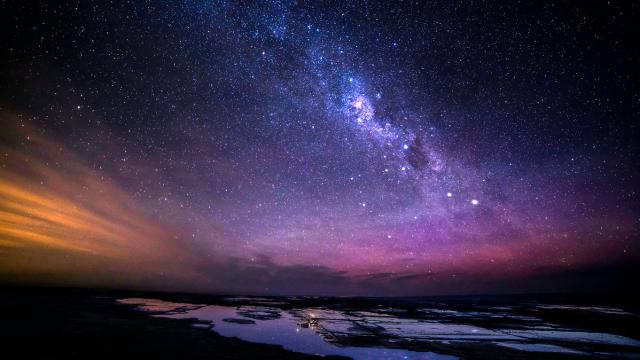Australian Scientists studying at the International Centre for Radio Astronomy Research just found out something pretty cool. Turns out the Andromeda galaxy, which is our Milky Way’s closest neighbour, is around the same size.
See we used to think Andromeda was up to three times larger than the Milky Way, and that one day it would engulf us entirely. Fun times! But we now have fodder for a rivalry that can continue for another few billion years or so.
This what we thought would happen:
Andromeda and the Milky Way Collide! from ICRAR on Vimeo.
To prove this scenario wrong, the research used a new technique to measure the speed required to escape a galaxy.
“When a rocket is launched into space, it is thrown out with a speed of 11km/s to overcome the Earth’s gravitational pull,” Astrophysicist Dr Prajwal Kafle, from The University of Western Australia node of the International Centre for Radio Astronomy Research, said. “Our home galaxy, the Milky Way, is over a trillion times heavier than our tiny planet Earth so to escape its gravitational pull we have to launch with a speed of 550km/s.”
The team used this technique to tie down the mass of Andromeda, confirming it is 800 billion times heavier than the Sun – the same as the Milky Way.
Dr Kafle said the research suggests scientists previously overestimated the amount of dark matter in the Andromeda galaxy.
“By examining the orbits of high speed stars, we discovered that this galaxy has far less dark matter than previously thought, and only a third of that uncovered in previous observations,” Dr Kafle said.
The Milky Way and Andromeda are two giant spiral galaxies in our local Universe, and light takes a cosmologically tiny two million years to get between them. With Andromeda no longer considered the Milky Way’s “big brother”, new simulations are needed to find out what will happen when the two galaxies eventually collide.
Dr Kafle used a similar technique to revise down the weight of the Milky Way in 2014, and said the latest finding had big implications for our understanding of our nearest galactic neighbours.
“It completely transforms our understanding of the local group,” Dr Kafle said. “We had thought there was one biggest galaxy and our own Milky Way was slightly smaller but that scenario has now completely changed. It’s really exciting that we’ve been able to come up with a new method and suddenly 50 years of collective understanding of the local group has been turned on its head.”
University of Sydney astrophysicist Professor Geraint Lewis said it was exciting to be at a time when the data was getting so good.
“We can put this gravitational arms race to rest,” he said.
[Source]
